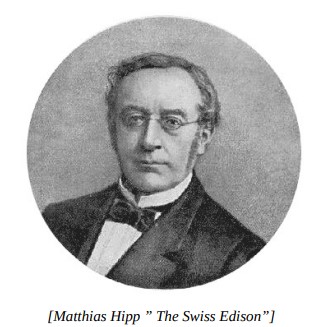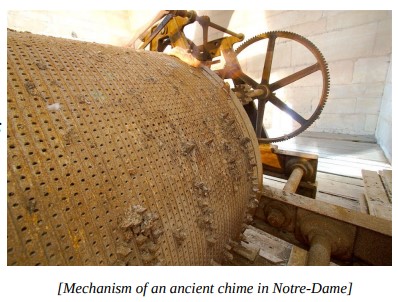🎹 Electromechanical Piano
What is an ’electromechanical’ instrument?
One in which some sort of electric pick-up system, either electromagnetic or electrostatic, detects and amplifies certain mechanical movements.
The German Matthias Hipp was a “serial inventor”: he was engaged in chronoscopes, chronographs, galvanometers, signaling equipment for railways, watches and gyros. He was probably the inventor of the world’s first “real” electronic musical instrument.
It is interesting that the specific descriptions or sketches of the Hipp device did not survive: we know about its electromechanical piano from fragments of descriptions that have come down to us by contemporaries, later processed by other authors.
Matthias (or Matthäus) Hipp’s – (Blaubeuren, 25 October 1813 – 3 May 1893 in Fluntern) –many inventions and adaptations include; Chronoscopes, Chronographs, Galvanometers, railway signalling equipment, watch and clock mechanisms, Telegraphic time detectors, telexes, networked electronic clocks, fire alarms, Microphones, Seismographs, electronic Gyroscopes and possibly the first electro-magnetic musical instrument.

Hipp described his invention in the 1867 edition of the Polytechnisches Journal – Das elektrische Clavier; von M. Hipp, Director der Telegraphen-Fabrik in Neuenburg (Schweiz). 1 Hipp’s instrument, a confluence of the technologies of watch mechanics, telegraphy and electro-magnetism, was an electro-mechanical player-piano, controlled by a perforated paper role. (and itself an improved version of an earlier (1861) attempt at building an electrical piano by Herr Andrea of Sindelfingen, Baden-Württemberg Germany). Music was encoded into the paper by cutting variable length perforations – pitch and duration– with a separate track for volume. The paper roll traversed over a set of brushes or ‘feathers’ which they made contact through the perforations, closed a circuit and triggered the piano hammer mechanism of a standard acoustic piano:

“A small instrument serves as a player–machine, in which there is a resilient metal tip for each key; these tips rest on a metal roller with corresponding pressure and send the electric current through the associated electromagnet every time this roller is touched, thus causing the relevant note to strike. Over the roller and between it and the tips runs (as in Bain’s telegraph) a wide, perforated paper tape; the position of the holes across the strip determines the height or depth of the notes to be played at the same time, the length of the holes in the direction of the length of the strip determines the duration of each note. The correct guidance of the paper tape on the Hipp’s Piano is effected by guide tips on the metal roller, by engaging the same in guide holes on the two edges of the paper tape.”
References
Wikipedia / 120years.net / Jedistar.com / Sudonull.com